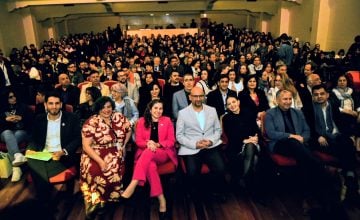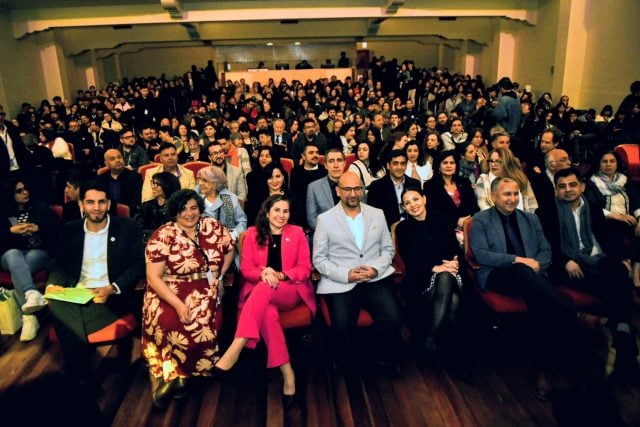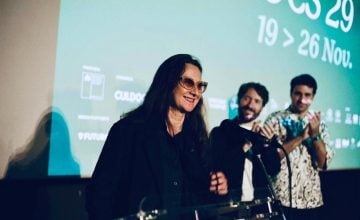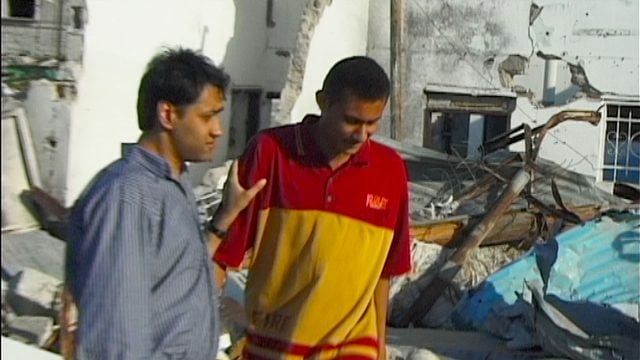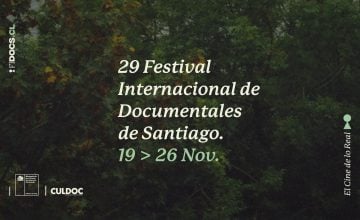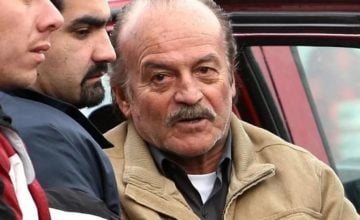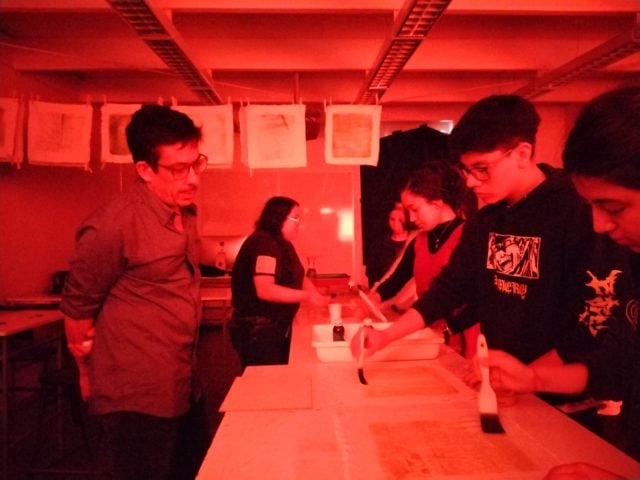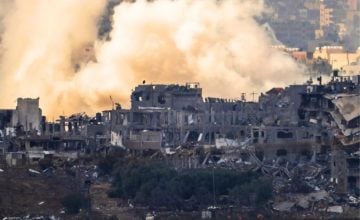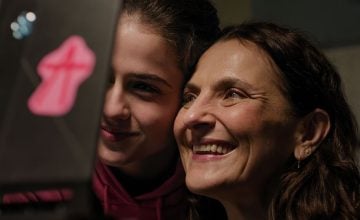By Revista La Lengua and El Ciudadano
We spoke with Ra�fal Camargo, director of the Valdivia International Film Festival, about opening night, the festival�e2�80�99s deep ties to the Los R�edos community, and the innovations shaping the 2025 edition.
First of all, Ra�fal, congratulations on the inauguration alongside the Minister of Cultures and other officials
Thank you. It was a powerful start, and we�e2�80�99re thrilled. Monday was the official opening day, but screenings began in the morning, and we were deeply grateful for the warm response in theaters and at the ceremony�e2�80 4it was packed. Our openings aren�e2�80�99t red-carpet or black-tie affairs; they�e2�80�99re a beautiful, citywide celebration.
Speaking of the public, how has FICV�e2�80�99s relationship with the Los R�edos region evolved over the years?
The festival happens once a year, but it�e2�80�99s produced by a cultural center that works year-round in Valdivia and visits every commune in the Los R�edos region. That continuous presence offers a different perspective and an ongoing lesson: we�e2�80�99re showing films all year long.
In many ways, the festival is the culmination of that sustained work. We tour towns and schools with screenings, then invite those audiences back for the event. It works really well�e2�80 4and there�e2�80�99s always room to grow. Many film festivals were conceived to foster tourism but are hosted in major capitals with low local participation because they�e2�80�99re oriented toward the industry.
Because our festival is designed for everyday audiences, people travel from across Chile and, at the same time, lots of residents of Valdivia and the region take part. That�e2�80�99s why our theaters are full.
Today the Valdivia Film Festival is considered the most important in Chile�e2�80�99s film industry. How do you view that after your years directing it?
We try to avoid any messianic narrative and keep our feet on the ground, but we�e2�80�99re very proud of what we�e2�80�99ve achieved. There�e2�80�99s real affection for the festival, and people let you know: from those who plan their vacations around it�e2�80�94which is wild�e2�80�94to the couple who got married and honeymooned at the festival after meeting here. Those micro-stories add up and make the idea of community real. It�e2�80�99s easy to talk about community or culture and risk sounding clich�e9, but when the clich�e9 becomes true, it�e2�80�99s beautiful. Still, there�e2�80�99s always room to improve. We have very high participation from Valdivia�e2�80�99s residents, but we can do more to counter the notion that a film festival is an elitist party for a select few. That perception also ties to Chile�e2�80�99s reality: limited leisure time, long workdays, a fragile economy, and a tendency to view culture as a superfluous expense. We should be building a robust cultural ecosystem instead of lamenting what�e2�80�99s missing.
The festival also mobilizes people across the country, and it shows. How do you evaluate that impact?
�e2�80�94We need to be clear. We�e2�80�99re doing very well: we have public support, civic backing, and filmmakers who want to premiere here. But ideally, that success shouldn�e2�80�99t become a kind of capitalization of what culture should be. Yes, the festival has strong metrics and certainly deserves investment for what it achieves and its economic impact. But should that be the yardstick that determines whether more fragile initiatives get a launch or not? Of course not. We need a comprehensive cultural budget, and in that sense the Minister (of Cultures, Arts and Heritage) has been very clear and effective in broadening how the sector can be funded. It�e2�80�99s not only large events like this festival that need budgets; smaller, more vulnerable initiatives do too: emerging film, dance, theater, poetry, and literature festivals. Being less crowd-pleasing shouldn�e2�80�99t translate into financial demotion. We must allocate resources there as well so they can continue to exist.
Do the festival�e2�80�99s new sections on comedy and animation also help reach different generations and audiences?
I see it as settling a historical debt. We have a great time making the festival, and we�e2�80�99ve always included comedies, Indigenous cinema, and animation�e2�80 4but sometimes those films got lost in the program. Last year we reinstated the Primeras Naciones section because it�e2�80�99s far better for Indigenous-themed films to sit under a clear umbrella than be scattered across the schedule. We realized something similar with animation and comedies.
We also had Nicol�e1s Vogt, a regular festivalgoer who now works with us. He taught a course on the history of comedy, and we thought: let�e2�80�99s start at home and ask him to curate a comedy section. It�e2�80�99s a nod to cultural work itself: someone who started in a seat is now a Valdivia programmer simply because he loves cinema. Animation followed a similar logic, especially because the scene is so vibrant and needed its own dedicated space. This is the start of that path.
For visitors coming for the first time, what do you recommend seeing or doing?
Two showcases are particularly strong. One is Map of Latin American and Caribbean Cinema, with five films presented by programmer Jonathan Ali from Trinidad and Tobago, a specialist in Caribbean cinema. We know very little about films from the Antilles and the Guianas: there�e2�80�99s a film from Martinique, another from Haiti, one from Jamaica, one from French Guiana, and one from Suriname. They are decolonial works focused on social struggles.
The other program is Glimmers of the Maghreb, curated by French researcher L�e9a Moran. These are films made by Mauritanian and Algerian filmmakers in France�e2�80 4the diaspora in the former metropole, the country that colonized them. They�e2�80�99re powerful because they unfold in the land of liberty, equality and fraternity, while showing it isn�e2�80�99t always so.
For those traveling to Valdivia, any practical tips? Where to eat, how to prepare for the weather?
Always be ready for rain. Bring a good waterproof jacket�e2�80�94umbrellas don�e2�80�99t work well here. You�e2�80�99ll often get a mix of sun and showers, so come with an outfit that lets you add or remove layers. As for food, make time for it. The riverside market is a great place to pick up salmon, merk�e9n and other local specialties. And with your festival badge, there�e2�80�99s a network of partner businesses where many restaurants offer discounts.
To close, an invitation to our readers.
Come join us! We�e2�80�99re celebrating the festival and thrilled with the public response. The event runs Monday to Sunday. A paid accreditation costs 30,000 pesos, and the student pass is 15,000. Slightly more than half of all screenings are free and first-come, first-served. Your badge lets you enter one film on a first-come basis, and there�e2�80�99s almost always an alternative in the auditorium next door.
One downside of being such a massive festival is simply this: there�e2�80�99s huge interest in the films. The mantra is “fila �fanica”: everyone in the same line�e2�80 4udience members and artists alike.
By Revista La Lengua and El Ciudadano
Read more:
El Ciudadano


